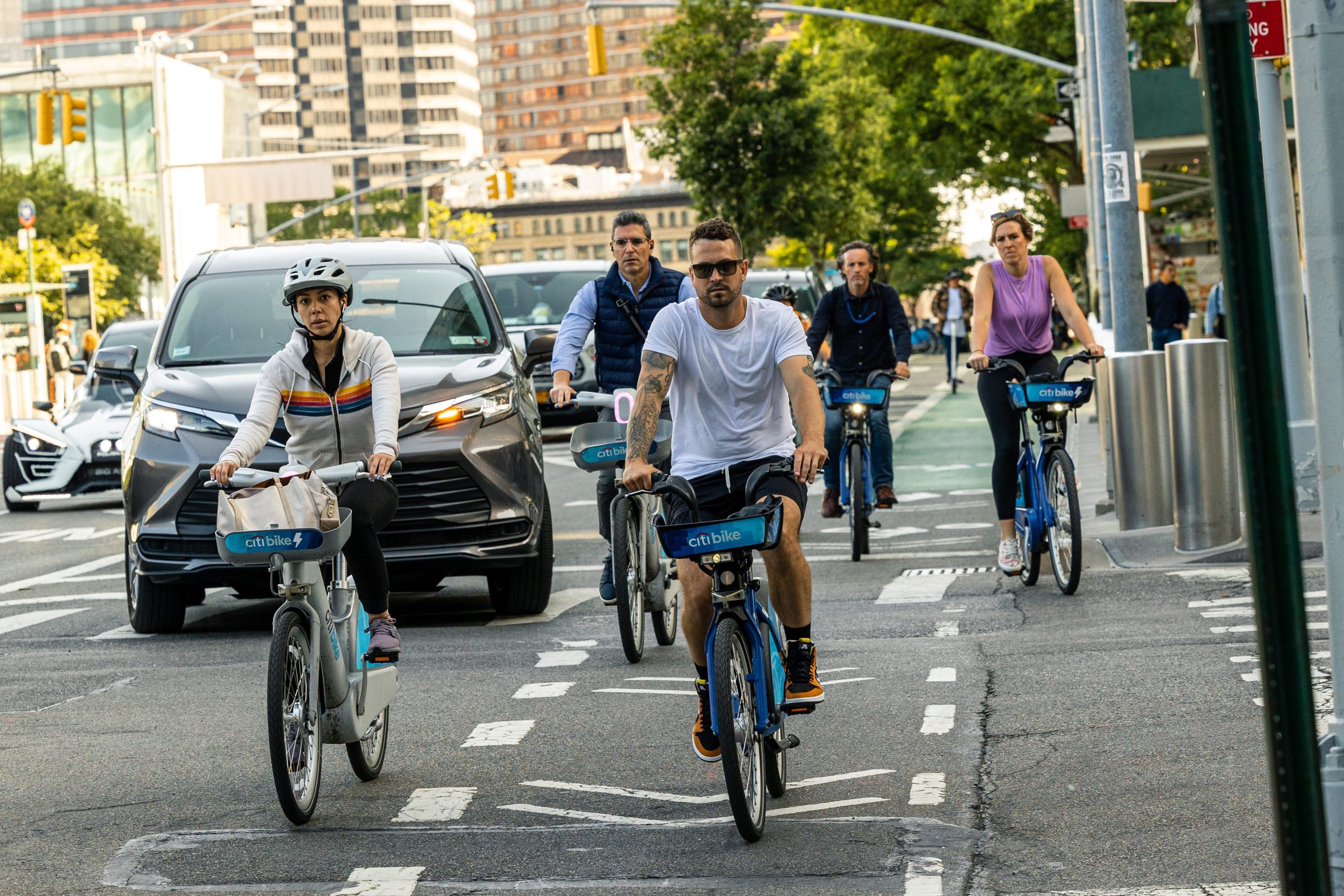
Scribner Avenue, New Brighton, Staten Island, formerly two- and now one-way, looking up the hill toward Bismarck Avenue from Westervelt Avenue
Streetsblog reader Dan Icolari became curious about changes that were being made on his neighborhood streets in Staten Island. In researching the issue he found that progressive policy statements coming out of Department of Transportation headquarters on Worth Street don't appear to be filtering down to the agency's borough offices. His own assumptions about what is "progressive" were challenged as well. Here is Dan's story:
Like other Streetsblog readers, I've been encouraged by DOT's recent, more enlightened pronouncements. But not long ago, when I noticed that DOT had converted a number of two-way streets to one-way in my Staten Island neighborhood, all I could see, as an alternative transportation advocate, was that a traffic-calming arrangement had been replaced by one that practically guaranteed higher speeds and less safe streets.
I called DOT to find out if my own two-way through street was on the list for conversion. And who makes these decisions, anyway? And how, and why?
The first thing I found out is, there is no list. "We get change requests mostly from community groups," said the Staten Island DOT rep I spoke to, "usually through the community board, though some changes are made by the borough commissioner." I was assured no change was planned for my block.
I then brought up the serious lack of crosswalks in the neighborhood--specifically in the several-block area surrounding my corner, where speeding has become a significant problem. It's an area where pedestrian traffic is not heavy but is constant throughout the day, and becomes heavier during rush hours and after school. I asked if the three-block stretch I referred to could be studied by DOT, possibly to introduce traffic-calming measures that might improve safety.
"No," the DOT rep replied, "that's just not what we do here. If there's a speeding problem you can ask NYPD to step up enforcement, but our job is to keep traffic moving efficiently, not to do studies on pedestrian safety." It wasn't the answer I was hoping for, or even the one I expected, but at least it was clear.
But what did my neighbors think, I wondered--the people who live on the two blocks recently converted from one-ways to two-ways? I was pretty sure they'd be furious at the loss of their charming two-way streets.
I was wrong.
Not only were my neighbors not furious; they were actually delighted.
After years of driving on steep hills with limited visibility in bad weather, they told me they welcomed the change. Only one, Jonathan B., preferred the old two-way arrangement because it provided more options.
"My choices as a driver are more limited now," admitted Joanne S., "but I think both blocks are safer." Her husband Alan seemed relieved: "With the change, I don't feel so tense behind the wheel." Harouna B. told me, "It's much safer for my kids, and there's finally a stop sign posted." Emily S. offered the most surprising observation: Speeding has actually declined, she said, and crossing the street is much safer.
As a committed walker and mass transit proponent, those were, once again, not the answers I was expecting. But when I visited the two now-one-way streets to take photos for this story, I could see my neighbors' point: There were multiple places in the roadway on both streets where it would be impossible to see oncoming traffic. I began to think that maybe my two-way-good, one-way-bad orthodoxy might need a little revising.
So I wonder: At a time of peak oil, global warming and growing population, when we want to raise levels of consciousness and encourage more thoughtful transportation choices, how do we design transportation policy elastic enough to work not just in Manhattan and the brownstone belt of Brooklyn, but in the rest of the city, too?
That is, how do we address the traffic, land-use, congestion and pedestrian/cyclist safety problems of the city's most dynamic areas, while devising practical alternatives that help outer-borough New Yorkers reduce private car use and make other environmentally conscious transportation choices, particularly in more suburban clusters not well served by public transit?





